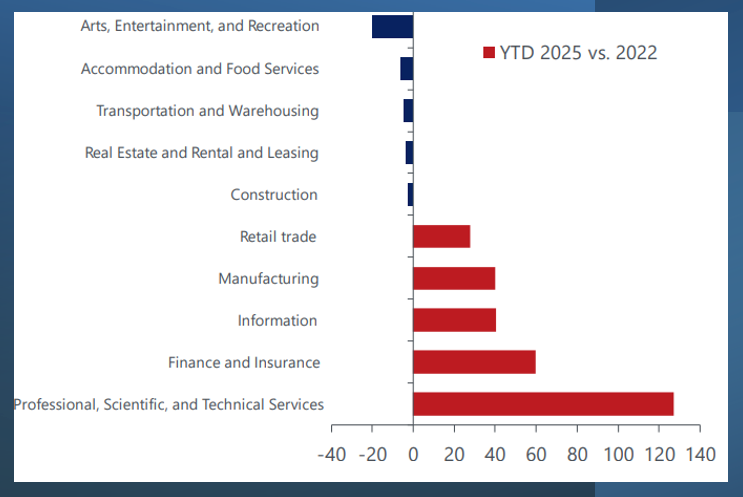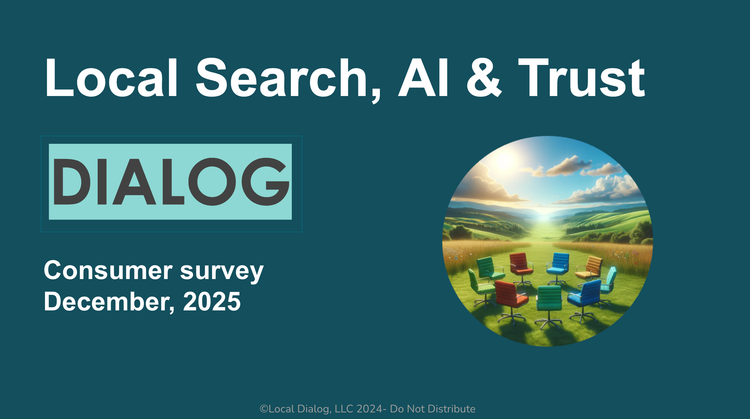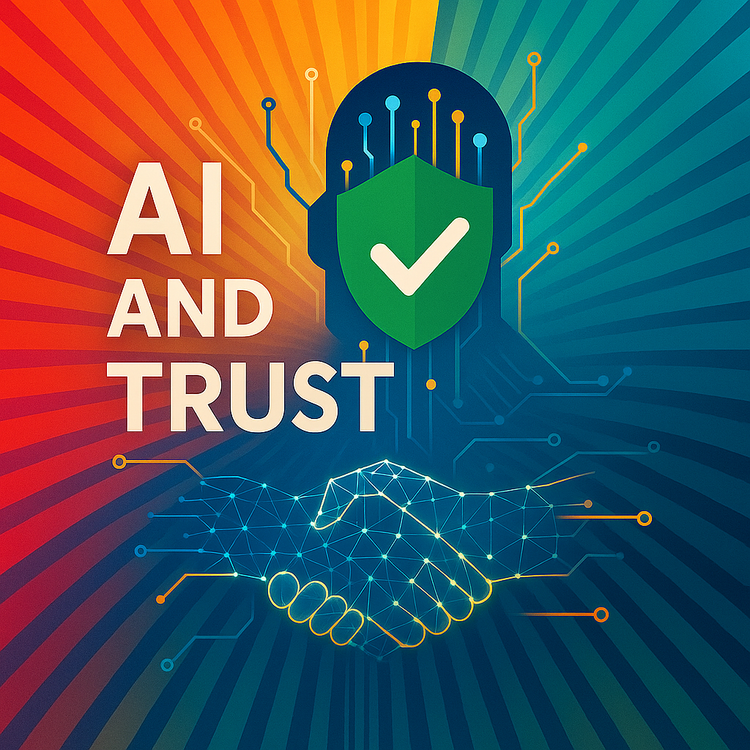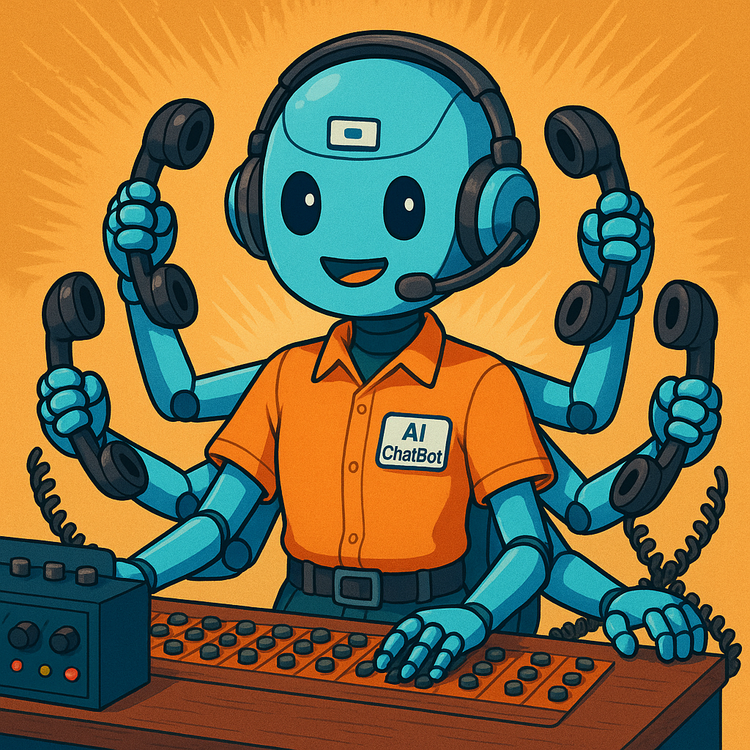Trading 'Entry-Level' for the Trades

As soon as AI started to take off there were alarmist predictions about job losses as well as counter-arguments about job creation. And very quickly a new cliché began circulating on LinkedIn: "You're not going to lose your job to AI, you'll lose your job to someone who uses AI."
While there's some truth there, it doesn't recognize a larger shift in the market.
In addition to the productivity benefits and potential competitive impacts of AI, one of the things we've been thinking about for some time is how AI will affect white collar professionals and office workers, especially entry-level employees. In addition to the freelancer market, there's evidence that this segment may be something of a canary in the job displacement coal mine.
Job Opportunities Contracting
A May 19 op-ed piece in the New York Times, by LinkedIn executive Aneesh Raman confirms that "entry level" job opportunities, which used to represent a college graduate’s first step up the career ladder are disappearing. Raman points out that the unemployment rate for college grads has risen 30% since September 2022, compared to about 18% for all workers. And according to widely cited research, some AI tools can now perform over 60% of tasks handled by entry-level sales professionals and nearly 50% of the responsibilities in junior finance and marketing roles, to say nothing of software programmers who have seen significant job losses and confront a shortage of new opportunities.
Just this week, Anthropic CEO Dario Amodei warned that AI was developing much faster than people realized and could potentially eliminate up to 50% of entry-level white-collar jobs within the next five years. He added that AI might cause unemployment rates to reach 20% in just a few years. (US unemployment during the Great Depression was 25%.)
AI tools can do much of the "grunt work" of a new lawyer at a fraction of the cost and time. As a colleague pointed out, "if you're doing it on a desktop, laptop or phone, it can be automated." This trend isn’t hypothetical — it’s being actively implemented by companies large and small trying to reduce overhead (read: labor costs) and increase efficiency.

Once considered a natural stepping stone for high school graduates and college students, these junior roles are increasingly being absorbed and eliminated by automated systems and intelligent software. The implications of this shift are profound, not only for workers but for educational institutions, the economy, personal mobility and the future of work itself. We could riff at length about the challenges organizations and institutions across society will face, but that's a conversation for another time.
A Structural Shift
Historically, entry-level jobs have been an important training ground for more senior-level roles in a range of organizations. Whether it's a junior marketing analyst learning how to manage campaigns, or a paralegal drafting contracts or court filings, entry-level positions enable young workers to develop the competencies required for career advancement.
Recent developments in AI and automation are dramatically reshaping this landscape. Many of the tasks once performed by junior employees are now being carried out by machines and software algorithms. The class of 2025 is feeling the impact. New college graduates are pessimistic about the job market and career opportunities. (It's also happening on Wall Street, squeezing Ivy League MBAs.) And there will be more evidence in the coming months confirming a structural change in the market is underway.
People will be forced to adapt. Some people may create their own jobs or found new small businesses. Another approach may be new interest in skilled trades. As one developer remarked in an online forum, "[I'm] getting ready to quit and try something like HVAC or plumbing or handyman work. Seems like coding is saturated and no jobs right now."
Beyond this, there is a significant ownership shift happening as baby boomers retire. This represents an unprecedented opportunity to take over and modernize established and in many cases successful local businesses. Over four million Americans will reach full retirement age over the next two years.
Trade Schools No Longer Second Class
While recent college graduates are finding it tough sledding out there, the trade services world continues to struggle with finding capable individuals to fill the ranks of their employment base. This isn’t a particularly new phenomenon and trades have often been shunned by ambitious young people as second class careers.
Trades aren't sexy. Nobody reads about the challenges high school seniors experience in trying to get into the trade school of their choice. But for the foreseeable future, we won’t see painters, plumbers or roofers being replaced by AI. The owners of those trade businesses will be turning to AI to help them run their shops more efficiently. But when it comes to sanding and caulking walls for painting, using a wrench to loosen a clogged pipe or ripping out the old composite roof – the actual work – people won't be replaced for a long time. Jobs that require a physical presence, manual dexterity, interpersonal skills or onsite problem-solving will be more difficult to automate.
Training for Trades
That gets us to the topic of training for these trades. There are some 7,500 trade and technical schools in the US with an estimated enrollment of 1.5 million. By comparison, some 16 million undergraduate students are enrolled in America’s colleges and universities.
Data from the National Student Clearinghouse shows a 16% year-over-year increase in trade school enrollment, with even higher growth in specific programs such as construction, culinary, cosmetology, welding, and automotive repair. Many trade programs offer certification in 6 to 18 months, allowing students to quickly enter the workforce with specialized, in-demand skills.
The Trump administration, as part of its campaign against Harvard, wants to redirect $3 billion to trade schools. Putting aside the administration's motivations, that grant would represent an increase of nearly $500,000 per trade school. If those schools could use that money to upgrade the curriculum while also helping to re-position careers in trades as high earning, tech-centric (for operations, marketing), and independent with exit opportunities, that could be a serious win for the trades. A $3 billion commitment is more than 10x what the Biden administration allotted to trade schools.
Yet higher education and skills training aren't mutually exclusive. There is room for hybrid models. Some forward-looking institutions are combining elements of a liberal arts education (such as critical thinking and communication) with technical training, producing graduates who are both adaptable and job-ready. This kind of multidisciplinary approach could become increasingly relevant as AI continues to affect traditional job categories.
The Way Forward?
The decline of entry-level jobs in white-collar sectors is not a temporary hiccup; it’s a structural shift driven by technology and market forces. While this creates challenges for new graduates and young professionals, it also creates an opening for trade schools to help redefine the future of workforce development.
By offering practical skills in resilient sectors, trade schools can serve as engines of economic stability and even upward mobility in the AI age. They are no longer a fallback; they may well be a forward-looking solution.
As employers continue to embrace automation, with ripple effects throughout the economy, operating or working in a trades business requires something no algorithm can replace: skilled labor, hands-on intelligence and real-world problem solving, to repair and sustain the systems we all depend on. In the shadow of AI, it may be the trades — not terminals — that offer a way forward for many young people.





